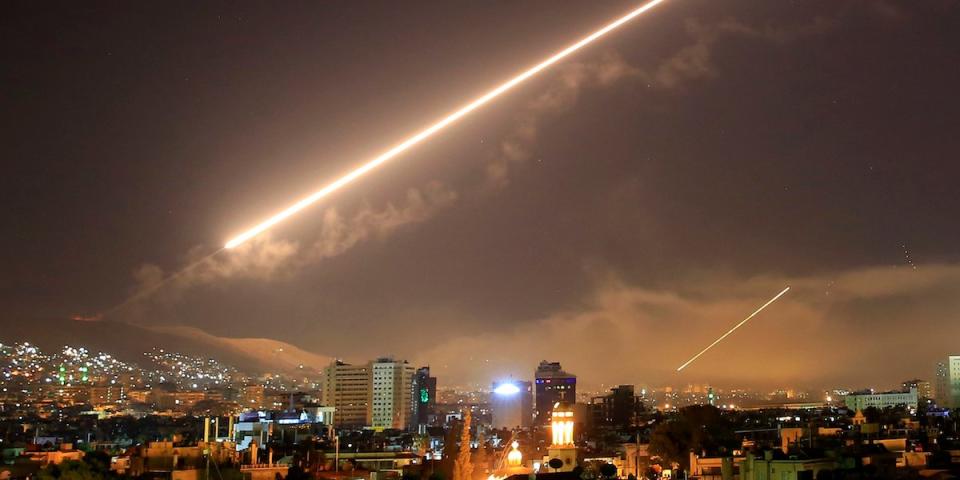Syria reportedly only fired 2 air defense missiles during the US strike, and then fired 38 more blindly

Syrian air defenses activated and fired interceptor missiles during the US, UK, France's strike, but reportedly only a couple had a chance of hitting their targets.
Syria fired only two missiles during the strike and the remaining 38 after the attack had already concluded, US government sources said.
Syria may have fired the missiles to make it look like it was intercepting US missiles.
Syrian air defenses activated and fired interceptor missiles during the US, UK, and France's missile strike on the country's suspected chemical weapons sites, but only two of those reportedly had a chance of hitting their targets.
US government sources tell Ankit Panda writing at The Daily Beast that only two missiles fired from Syria's air defenses took off during the actual strike, and they both failed. Another 38 launched after the strike took place, and obviously found no target, according to Panda's sources.
The report from Panda matches pictures taken on the night of the strike that show missile defense sites firing on ballistic trajectories that don't resemble the paths they'd take to actually intercept a missile.
"The trajectory that I've seen from footage of reported Syrian SAMs don't match up with what I'd expect to see for intercept attempts against low-flying cruise missiles," Justin Bronk, an air-combat expert at the Royal United Services Institute, told Business Insider. "I don't believe the Russian/Syrian intercept claims."
Nonetheless, Russia and Syria claimed their missile defenses had downed 71 of the 105 US and allied missiles fired, a bold claim considering they're only known to have fired 40 interceptors.
"Most of the launches occurred after our strike was over," US Marine Corps Lt. Gen. Kenneth F. McKenzie, the Joint Staff director, said of Syria's interceptor fires. "When you shoot iron into the air without guidance, it has to come down somewhere."
But Syria is also home to advanced Russian missile defense systems treated with a healthy respect by NATO and the US, but the US says those launchers remained silent throughout the strike.
Days later, Syrian air defenses again fired off interceptors at nothing, this time claiming the US and Israel had hit them with a cyber attack.
Why Syria fired missiles blindly with no targets in sight remains a mystery, as they had no chance of hitting anything, but it's possible the attempted intercepts were staged as theater.
See Also:

 Yahoo Finance
Yahoo Finance 
